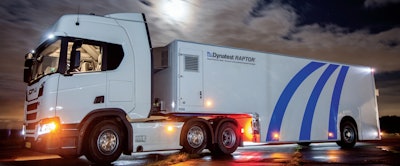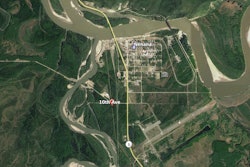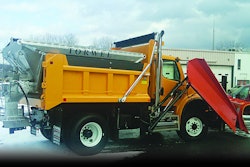
Dynatest has begun accepting orders for the Rapid Pavement Tester, or RAPTOR service, a new way to measure and record the state of pavements. It features a Rolling Weight Deflectometer (RWD) for taking continuous bearing capacity measurements of pavement at normal driving speed.
The platform is able to collect both structural and functional data simultaneously and eliminates the need for users to make a big asset investment. That because it’s a consulting service that ensures you not only get outstanding data and analysis, but the benefits of Dynatest’s 40-year experience in structural and functional evaluation, the company says.
It’s been a couple of years in the making, with the Dynatest Research and Development Centre developing this new platform in Europe.
In January 2018, it was introduced to the Transportation Research Board (TRB), and it will be showcased at the TRB’s annual meeting at a nearby parking lot, in January 2019. Attendees can get an up-close look, going inside the trailer to see the technology, readings and reports, on January 14 and 15, say Dynatest experts.
(TRB is a program unit of the National Academy of Sciences, Engineering and Medicine, a non-profit organization providing independent, objective, and interdisciplinary solutions.)
Developed in 2017, the vehicle consists of a specially designed semi-trailer and a standard truck. The semi-trailer carries the RWD technology developed at Dynatest, as well as other optional systems. Last August, a demonstration tour was carried out in Italy on this pavement level evaluation service.
With this introduction of the RAPTOR service, Dynatest is expanding its portfolio of pavement engineering consultancy services.
Structural and functional pavement evaluation
For the last four decades, Dynatest has been the pioneer and forerunner in structural and functional pavement evaluation with its state of the art Falling Weight Deflectometer and Road Surface Profiler, the company says.
“The turnkey consultancy combined with the high maneuverability of the equipment, makes high speed structural and functional data collection for smaller networks, such as cities and municipalities a practical and viable solution,” the company says.

Dynatest lists these benefits of using RAPTOR and the RWD:
- Affordable – low cost per kilometer or mile (structural and functional data)
- High Speed – following the traffic
- Continuous – data from the entire length of pavement
- One Platform – for both structural and functional data
- No investment – operated by certified Dynatest personnel
Using major technological advances in digital imaging, Dynatest further developed the RWD principle and solved its biggest issue – correlating distance measurements from the same spot on the pavement from different sensors, the company says.
This is done on the RAPTOR using normalized cross correlation on images collected from line laser profilers, rather than conventional distance lasers (a technique patented by Dynatest in 2013).
Beyond that, the company says, by expanding the measurement system with highly accurate inertial sensors for tracking beam movements, the requirement for the length of the measurement beam is significantly reduced. Dynatest patented that process in 2017.
“This makes the RAPTOR the smallest and most flexible RWD to date,” the company says.
To ensure consistency in the data over time, Dynatest has developed a highly accurate calibration technique.
This makes it possible to perform a calibration onboard the vehicle within minutes, by using the integrated linear actuation system for scanning a reference surface with zero deflection. And this then allows for fast and frequent calibration, ensuring both accuracy and consistency in the data.












